Delve into the political structure of ancient Egypt, where the Pharaoh ruled as a divine leader supported by a sophisticated bureaucracy. Explore the concept of ma'at, the guiding principle of order and justice, and its profound influence on governance and future civilizations.

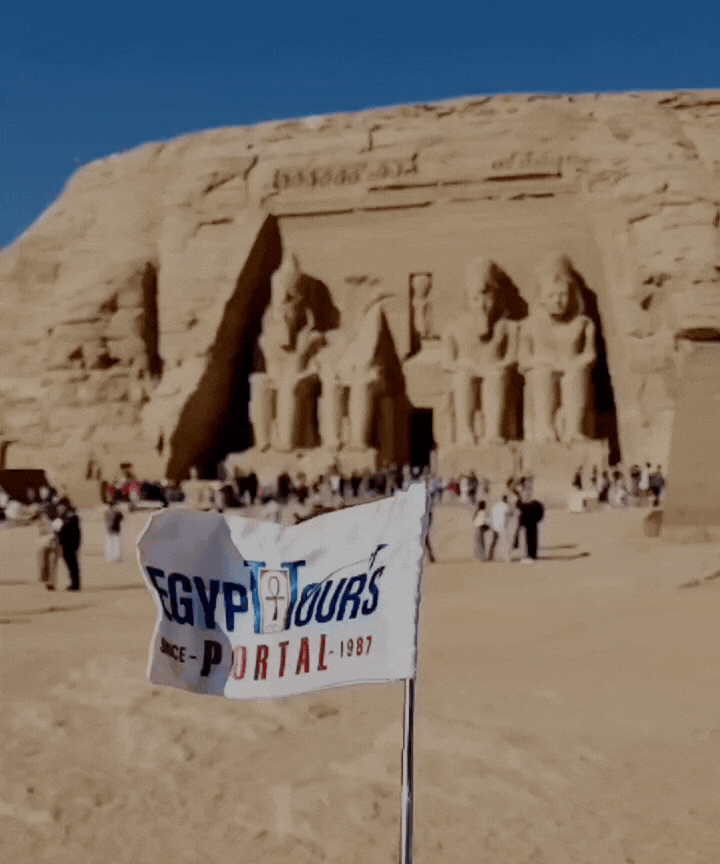
The politics of ancient Egypt played a role in every aspect of the society which included religion, culture, and art, creating one of history’s most enduring and influential civilizations. Rooted in a theocratic monarchy, the governance of Egypt revolved around the Pharaoh, who was both a political leader and a divine figure, embodying the will of the gods.
This centralized authority was supported by an intricate bureaucracy of viziers, scribes, and regional officials, enabling the efficient administration of vast territories and complex societal needs. From the unification of Upper and Lower Egypt under King Narmer around c. 3150 BCE to its annexation by Rome in 30 BCE, Egypt’s political systems evolved to address challenges of stability, expansion, and diplomacy.
The political philosophy of ma’at symbolizes truth, order, and justice which guided the kingdom’s rulers, ensuring a balance between centralized power and regional authority. This unique blend of divine kingship, bureaucratic sophistication, and cultural ideals not only sustained Egypt for over three millennia but also left a profound legacy on subsequent civilizations.

The political structure of ancient Egypt was an intricate and highly organized hierarchy that allowed one of history's most enduring civilizations to flourish for over 3,000 years. At its summit was the Pharaoh, who wielded absolute power as both a political and divine ruler. Supporting this apex were viziers, scribes, and a network of officials who managed Egypt's vast territories and complex administration. This political system was established around c. 3150 BCE with King Narmer's Unification Battle of Upper and Lower Egypt, and continued, with periodic reforms, until the Roman annexation in 30 BCE.
The bureaucracy was the lifeblood of this system, overseeing taxation, trade, agriculture, law enforcement, and monumental construction. The kingdom was divided into nomes, or provinces, each governed by a nomarch. This system provided local oversight while ensuring the central government maintained overall control. During the Egypt Old Kingdom (c. 2613–2181 BCE), this framework facilitated monumental achievements like the construction of the Great Pyramid of Giza. In later periods, such as the New Kingdom Of Egypt (c. 1550–1070 BCE), it enabled large-scale projects like the temples at Karnak and Abu Simbel.
To maintain cohesion, the bureaucracy relied on a system of checks and balances. Scribes documented all activities, from tax collections to royal decrees, providing an early form of accountability. The centralized structure was flexible enough to adapt to Egypt’s needs over millennia, balancing local governance with centralized power.

The Pharaoh was the heart of ancient Egyptian politics, embodying both ultimate political authority and divine will. As the "Lord of the Two Lands," the Pharaoh unified Upper and Lower Egypt, maintaining ma’at (order, truth, and justice) as a sacred duty. This divine kingship was rooted in the belief that the Pharaoh was the earthly incarnation of Horus and the son of Ra, the sun god of the main Ancient Egyptian Gods which legitimized their absolute control. Pharaohs enacted laws, commanded armies, directed economic policies, and oversaw religious activities.
Their responsibilities extended to commissioning monumental examples of Ancient Egyptian Architecture, such as Pyramids, Temples, and statues, to display their power and piety. For instance, King Narmer (c. 3150 BCE) is credited with unifying Egypt and establishing the foundational aspects of the political system. Similarly, Ramesses II (r. 1279–1213 BCE) expanded Egypt’s empire, engaged in the famous Battle of Kadesh, and commissioned grandiose projects like Abu Simbel Temple to assert his dominance.
Coronation ceremonies marked the beginning of a Pharaoh's reign, symbolizing their divine mandate. Rituals such as the "Offering of Ma’at" underscored their role as the guarantor of cosmic balance. Sed festivals, held periodically, rejuvenated their authority and reinforced their divine status among the people. The Pharaoh’s dual role as king and high priest ensured their involvement in all aspects of governance, from military campaigns to agricultural policies.

Beneath the Pharaoh stood the vizier, or “tjaty,” who acted as the chief administrator of Egypt. Often compared to a modern-day prime minister, the vizier ensured that the Pharaoh's decrees were carried out across the kingdom. The position of vizier was formalized during the Old Kingdom and reached new levels of complexity during the New Kingdom when two viziers were often appointed—one for Upper Egypt and one for Lower Egypt—to manage the kingdom’s vast expanse.
The vizier’s responsibilities were extensive, encompassing taxation, public works, the judiciary, and temple management. They supervised an army of scribes, who kept meticulous records of agricultural yields, tax payments, and resource distribution. For example, Imhotep, the vizier of King Djoser (r. 2670–2640 BCE), was an administrative genius and an architect credited with designing the Step Pyramid at Saqqara. His contributions exemplify viziers' multifaceted role in supporting the Pharaoh’s divine and practical responsibilities.
During the reign of Senusret I (c. 1971–1926 BCE), the vizier oversaw the construction of the Karnak Temple, coordinating labor, resources, and logistics. This was no small feat, as projects of such scale required the cooperation of multiple nomes, careful planning, and efficient communication. Other high-ranking officials, including treasurers, military generals, and overseers, played crucial roles in the administration. Local governance was delegated to nomarchs, who reported to the vizier but had significant autonomy in managing their regions.
This system of layered administration ensured that the Pharaoh’s authority extended to every corner of the kingdom while allowing regional officials to address local needs. Scribes, the backbone of the bureaucracy, recorded everything from legal proceedings to agricultural inventories. These records facilitated efficient governance and provided insights into daily life in ancient Egypt, highlighting the importance of administrative roles in sustaining one of history’s greatest civilizations.

Ancient Egypt’s political landscape shifted between periods of centralized authority and regional decentralization, influenced by internal dynamics and external pressures. The Old Kingdom (c. 2613–2181 BCE) was characterized by a highly centralized bureaucracy, with the Pharaoh at its apex exerting absolute control. This era saw the construction of monumental projects like the pyramids, demonstrating the central government's ability to mobilize resources across vast territories. The vizier, acting as the Pharaoh’s chief administrator, ensured policies were implemented uniformly across the nomes (provinces), while scribes meticulously recorded agricultural output, taxes, and trade activities.
However, during the First Intermediate Period (c. 2181–2040 BCE), the collapse of centralized power led to significant autonomy for regional governors, or nomarchs. These local rulers wielded control over their territories, collecting taxes, maintaining militias, and even building their temples. The weakened central authority led to fragmentation and internal conflict, with the nomarchs often vying for supremacy.
The Middle Kingdom Of Egypt (c. 2040–1782 BCE) restored centralized governance under leaders like Mentuhotep II, who reunited Egypt, and Amenemhat I, who restructured administration to curb regional power. Amenemhat I moved the capital to Itj-tawy and created Egypt’s first standing army to ensure loyalty directly to the throne. The dual administration system, with officials for both Upper and Lower Egypt, further strengthened control. Trade expanded during this period, bolstering the economy and reinforcing central authority.
The New Kingdom (c. 1550–1070 BCE) saw Pharaohs like Tuthmosis III and Ramesses II reasserting centralized power through military conquests and diplomatic alliances. These rulers expanded Egypt’s borders, establishing it as a dominant empire. However, by the Third Intermediate Period (c. 1070–664 BCE), the balance of power shifted again. Regional rulers, particularly the High Priests of Amun at Thebes, gained substantial authority, challenging the central government and leading to a fragmented state.

Religion was deeply intertwined with Egyptian politics, shaping the structure of governance and legitimizing the Pharaoh’s rule. The Pharaoh was considered both a political leader and a divine figure, embodying the will of the gods. This divine kingship was symbolized by rituals such as the "Offering of Ma’at," where the Pharaoh demonstrated their commitment to maintaining cosmic balance.
Temples served as religious, economic, and administrative hubs, controlling vast estates and employing thousands of workers. The priesthood, particularly the cult of Amun, held immense power, influencing policies and accumulating wealth. During the New Kingdom, Karnak Temple became a symbol of this religious-political synergy. However, this balance was disrupted during Akhenaten’s reign (1353–1336 BCE), when he introduced monotheism centered on Aten. Akhenaten’s reforms weakened the Amun priesthood but destabilized traditional governance, contributing to economic decline and unrest.
By the reign of Horemheb (1320–1295 BCE), traditional religious practices were restored, reaffirming the connection between political authority and divine legitimacy. Despite this, the growing power of the priesthood during the Third Intermediate Period diluted centralized control, exemplifying the complex relationship between religion and politics.
Explore more magnificent details about the rituals, beliefs, and customs of the religion of the ancient Egyptians.
Read More
The military played a pivotal role in securing Egypt’s borders, expanding its territory, and maintaining internal stability. During the Old Kingdom, the military was composed mainly of conscripts raised by regional governors. However, the Middle Kingdom introduced the concept of a standing army under direct royal control, strengthening centralized power.
Tuthmosis III (r. 1479–1425 BCE) transformed the military into a professional force, leading campaigns into Nubia and the Levant, establishing Egypt as a dominant empire. His victory at the Battle of Megiddo (c. 1457 BCE) showcased Egypt’s military prowess and secured vital trade routes. Ramesses II’s engagement at the Battle of Kadesh (c. 1274 BCE) against the Hittites culminated in the world’s first known peace treaty, highlighting the military’s role in diplomacy and statecraft.
During the New Kingdom, specialized units like the Nubian Medjay served as elite guards and border patrols, while innovations such as chariots and composite bows enhanced the army’s effectiveness. Military campaigns not only ensured political stability but also brought immense wealth through tribute and trade.
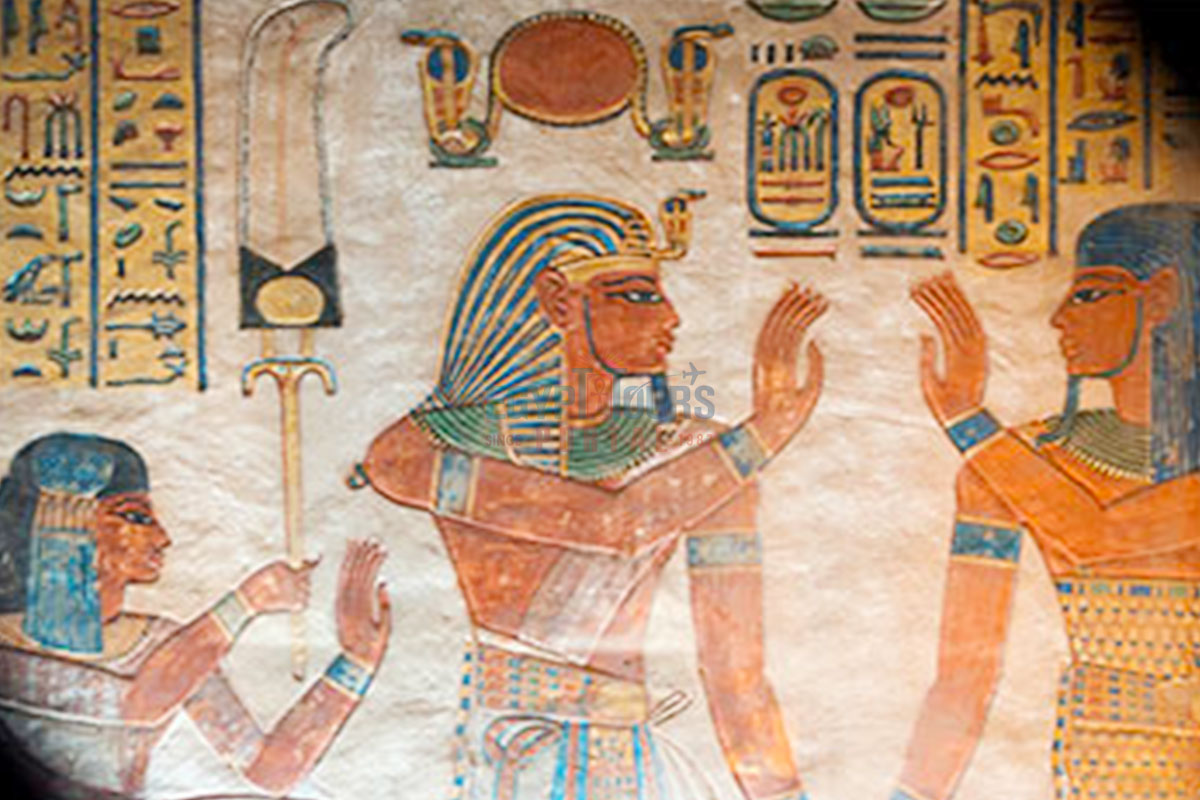
Succession in ancient Egypt was a critical factor in maintaining political stability. Dynastic continuity was upheld through royal lineage, often reinforced by strategic marriages within the family or with foreign royalty. The concept of divine kingship meant that the legitimacy of a Pharaoh was tied to their ability to uphold ma’at and their perceived connection to the gods.
Queen Hatshepsut (r. 1479–1458 BCE) assumed the throne as a female Pharaoh, skillfully navigating patriarchal norms to secure her position. Her reign demonstrated the flexibility of the system, allowing for adaptation during times of uncertainty. Conversely, the First Intermediate Period exemplifies the chaos that ensued when succession was contested, with regional rulers asserting independence in the absence of a strong central figure.
The New Kingdom’s Ramesside Period saw elaborate succession planning, with Pharaohs often grooming multiple heirs. Despite this, incidents like the harem conspiracy against Ramesses III (r. 1186–1155 BCE) illustrate the vulnerabilities of dynastic rule.
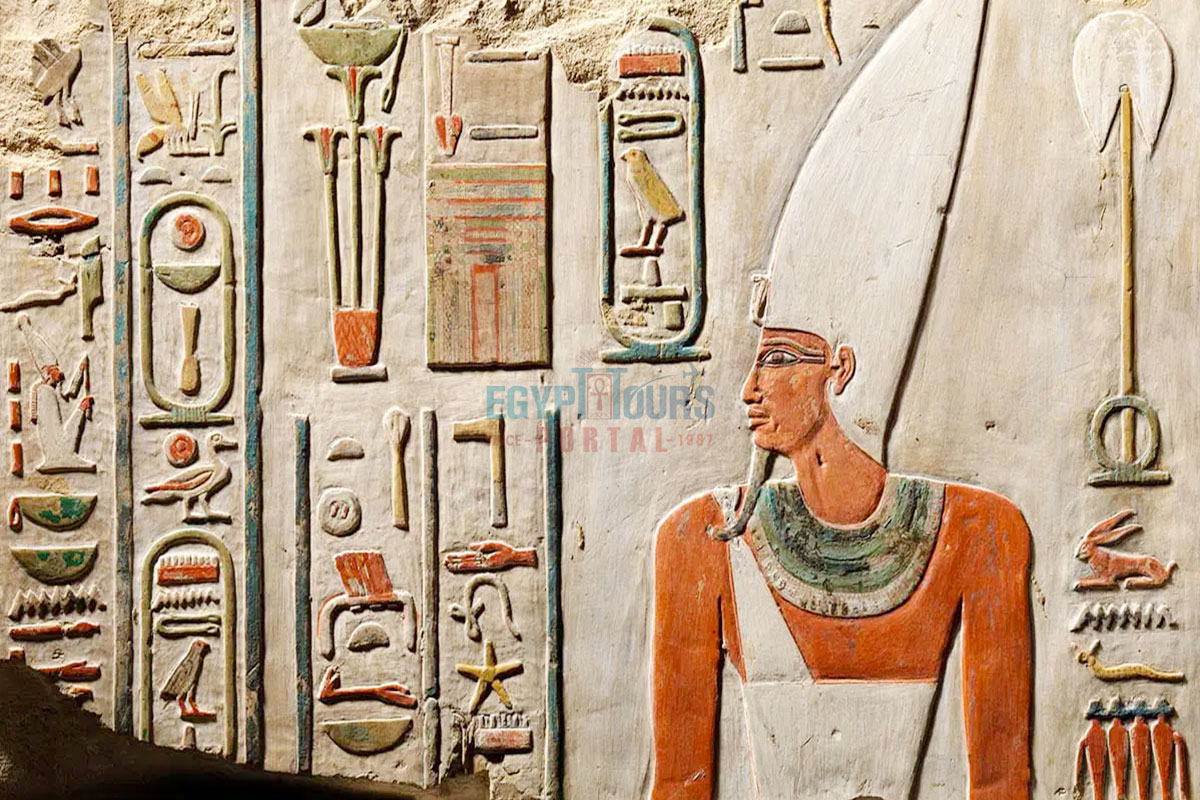
Reforms were often implemented in response to crises or to consolidate power. Amenemhat I’s establishment of a standing army and relocation of the capital during the Middle Kingdom are prime examples of administrative innovation to restore central authority. The biannual cattle census, introduced during the Old Kingdom, standardized resource management and taxation, ensuring efficient governance.
Akhenaten’s religious reforms during the New Kingdom marked a dramatic shift, concentrating religious and political authority around Aten. While intended to curb the Amun priesthood’s power, these changes destabilized the economy and weakened diplomatic ties. Horemheb’s subsequent reign focused on reversing these disruptions, reinstating traditional practices, and reinforcing bureaucratic efficiency. These reforms illustrate how Egypt’s political system evolved to address internal and external challenges while preserving its foundational principles.
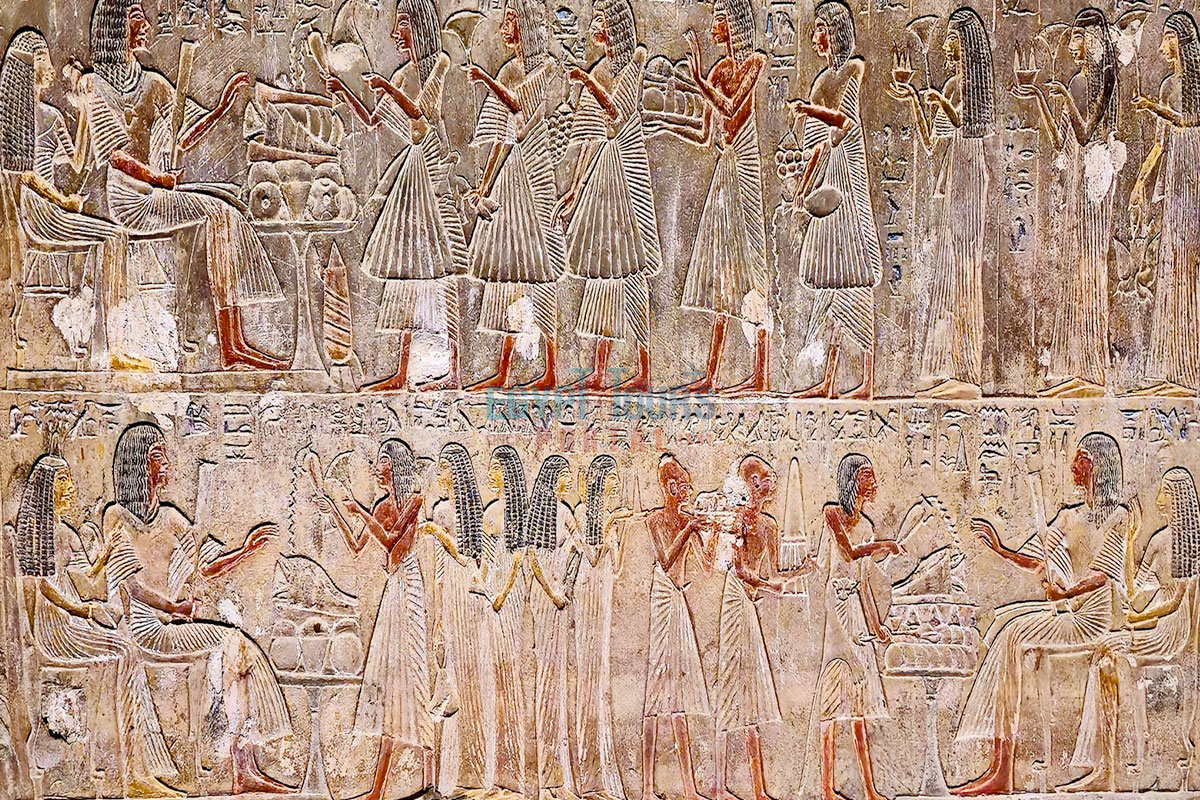
Women in ancient Egyptian politics held significant influence, particularly as queens, regents, consorts, and occasionally Pharaohs, defying societal norms often imposed on women in other ancient civilizations. Royal women contributed to political stability, governance, diplomacy, and religious leadership, leaving an enduring legacy in Egypt’s history. Queens, such as Ahmose-Nefertari (c. 1570–1530 BCE) and Tiye (c. 1398–1338 BCE), played vital roles in governance.
They advised their husbands, managed state affairs, and corresponded with foreign leaders, while also acting as regents for young heirs. Ahmose-Nefertari was deified after her death, reflecting the close relationship between royal women and Egypt’s political-religious system. Hatshepsut (r. 1479–1458 BCE), one of the most prominent female Pharaohs, wielded supreme authority, emphasizing her divine legitimacy. Her reign was marked by economic prosperity, political stability, and monumental achievements like the mortuary temple at Deir el-Bahri.
Despite later efforts to erase her legacy, her impact on Egyptian politics remains significant. Cleopatra VII (r. 51–30 BCE), Egypt’s last Pharaoh, exemplified political acumen, forging alliances with Julius Caesar and Mark Antony to safeguard Egypt’s sovereignty amidst Roman expansion. Her intelligence and diplomacy highlight the strategic roles women played in statecraft.
Royal women also served as diplomats, using marriage and alliances to maintain peace and secure borders. For example, Amenhotep III’s marriage to Mitanni princesses strengthened diplomatic ties. Additionally, women in religious roles, such as “God’s Wives of Amun,” wielded economic and administrative power by managing temple estates, further enhancing their political significance.
Deification elevated women’s political status, as seen with Ahmose-Nefertari and Nefertari, wife of Ramesses II, who were worshiped as divine intermediaries. Such integration into Egypt’s religious framework amplified their influence. women acted as stabilizing forces, ensuring smooth transitions of power and upholding governance. Their contributions in diplomacy, administration, and religion demonstrated that political authority in Egypt was not solely a male domain, securing their place as integral to Egypt’s enduring legacy.

Monuments and art in ancient Egypt served as powerful tools of political propaganda, reinforcing the authority of Pharaohs and promoting state ideology. Pharaohs commissioned grand structures of Ancient Egyptian Architecture to symbolize their divine connection and political power. The Great Pyramids of Giza (c. 2580–2560 BCE) are prime examples of how architecture immortalized Pharaohs as divine rulers. Similarly, temples like Abu Simbel, constructed by Ramesses II (r. 1279–1213 BCE), not only showcased military victories but also emphasized the Pharaoh’s piety and ability to maintain cosmic order.
Reliefs and inscriptions played a central role in communicating political messages. For instance, temple walls often depicted the Pharaoh smiting enemies or offering tribute to gods, symbolizing their role as both a protector and intermediary with the divine. Artworks such as the Narmer Palette (c. 3150 BCE) celebrated King Narmer's unification of Egypt, blending historical events with symbolic imagery to legitimize his rule.
Explore more fascinating facts about the beauty and meaning behind ancient Egyptian Art.
Read MoreEven everyday items, like stelae, were used to convey royal decrees and victories. The victory stela of Merneptah (c. 1208 BCE) highlighted his triumphs over foreign powers, further asserting his strength and divine favor. Monuments and art ensured the Pharaoh's legacy endured while also subtly reminding subjects of their ruler’s divine authority and the importance of loyalty to the state.

The Pharaoh was the highest authority in the judicial system, embodying ma’at. As the chief judge, the Pharaoh’s primary duty was to ensure harmony within the kingdom by resolving disputes, issuing decrees, and upholding laws aligned with ma’at. The Pharaoh delegated much of the legal work to viziers, who acted as chief administrators and supervised local courts, but all major legal decisions ultimately traced back to the Pharaoh.
The legal system was well-organized, with courts operating at different levels. Local disputes were typically handled by village elders, while complex cases were escalated to the vizier or the Pharaoh. Legal proceedings were often documented, as seen in the famous Wilbour Papyrus (c. 1140 BCE), which detailed land ownership disputes.
Ancient Egyptian law emphasized restorative justice rather than punishment. Property disputes, theft, and family conflicts were resolved through negotiation and compensation rather than severe penalties. However, crimes against the state, like rebellion or temple robbery, were punished harshly to deter challenges to the Pharaoh's authority.
The Pharaoh’s role in justice extended to religious matters, as they acted as intermediaries between gods and humans. Ceremonies like the "Offering of Ma’at" reaffirmed the Pharaoh’s responsibility to uphold order, ensuring stability across both the divine and human realms.

Ancient Egypt’s political systems profoundly influenced subsequent civilizations, laying the groundwork for centralized governance and the concept of divine kingship. The idea of rulers deriving their authority from the gods resonated in later cultures, such as the divine-right monarchies of medieval Europe and the emperor cults of Rome.
Egypt’s sophisticated bureaucracy set a standard for governance, particularly in record-keeping, taxation, and legal administration. Scribes meticulously documented state affairs, an innovation that influenced administrative practices in Mesopotamia, Greece, and Rome. The notion of regional governors, like Egypt’s nomarchs, parallels systems in later empires, such as Roman provinces and Persian satrapies.
Monumental architecture as a tool of political propaganda also became a hallmark of subsequent civilizations. The Romans borrowed heavily from Egyptian monumental design, as seen in obelisks transported to Rome, while Greek historians admired Egypt’s temples and pyramids for their grandeur and symbolism.
Even Egypt’s concept of ma’at, emphasizing balance and justice, shaped early philosophical ideas about governance, influencing Greek and later Enlightenment thought. Egypt’s legacy as one of history’s most enduring political systems continues to inspire both scholars and governments in understanding statecraft and societal organization.
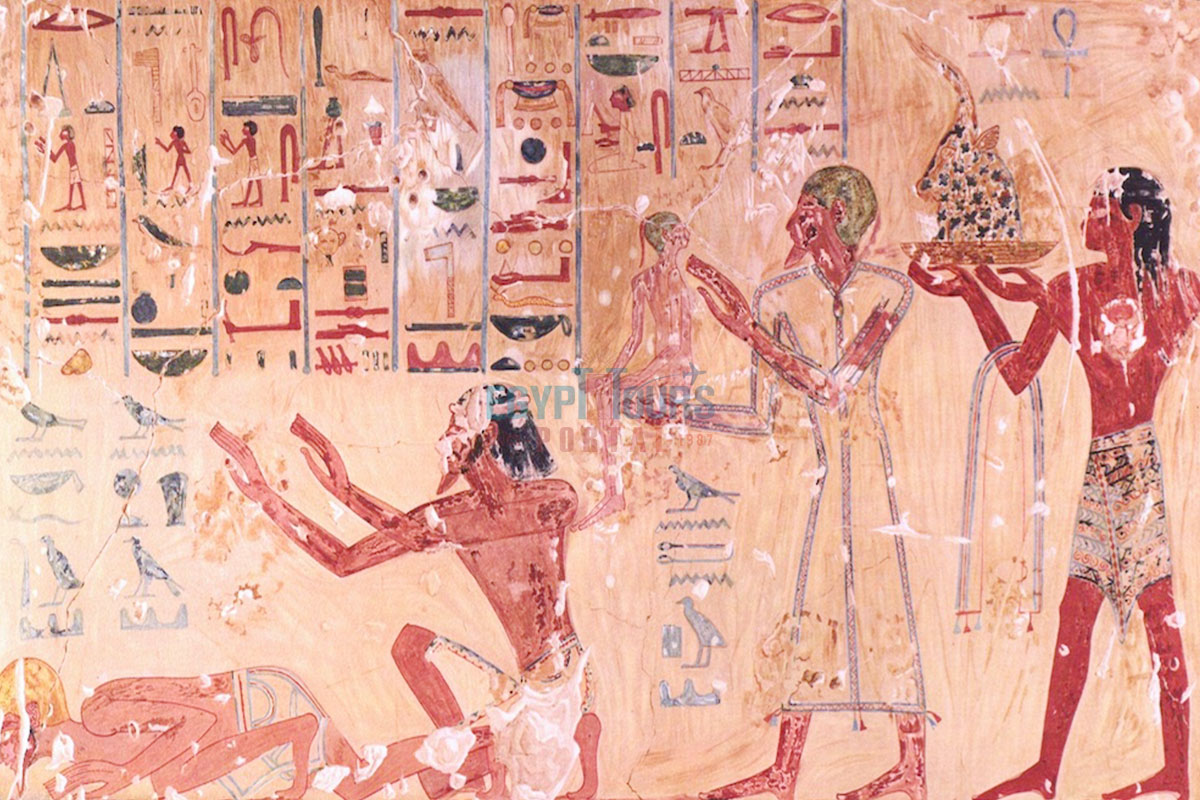
Diplomacy was a cornerstone of Egypt’s foreign policy, allowing it to maintain power and influence in the ancient world. Pharaohs employed treaties, trade, and marriage alliances to strengthen relationships with neighboring states. The earliest known peace treaty, signed after the Battle of Kadesh (c. 1274 BCE) between Ramesses II and the Hittites, exemplifies Egypt’s diplomatic sophistication.
Egypt established trade networks with regions like Nubia, Punt, and the Levant, importing valuable resources such as gold, incense, and cedar wood. The Amarna Letters (14th century BCE) provide a glimpse into diplomatic correspondence between Pharaohs like Akhenaten and rulers of Mitanni, Babylon, and Assyria, revealing the complexities of maintaining alliances and managing conflicts.
Royal marriages were another strategic tool, often used to solidify alliances. For example, Amenhotep III married a Mitanni princess to secure peace and strengthen ties with the region. However, Egypt also demonstrated military force when diplomacy failed, as seen in campaigns against the Nubians and Hyksos.
By balancing diplomacy with military power, Egypt maintained its dominance for millennia, establishing itself as a key player in the ancient Near East. Its diplomatic strategies laid the groundwork for international relations, influencing subsequent empires in managing foreign affairs and fostering alliances.
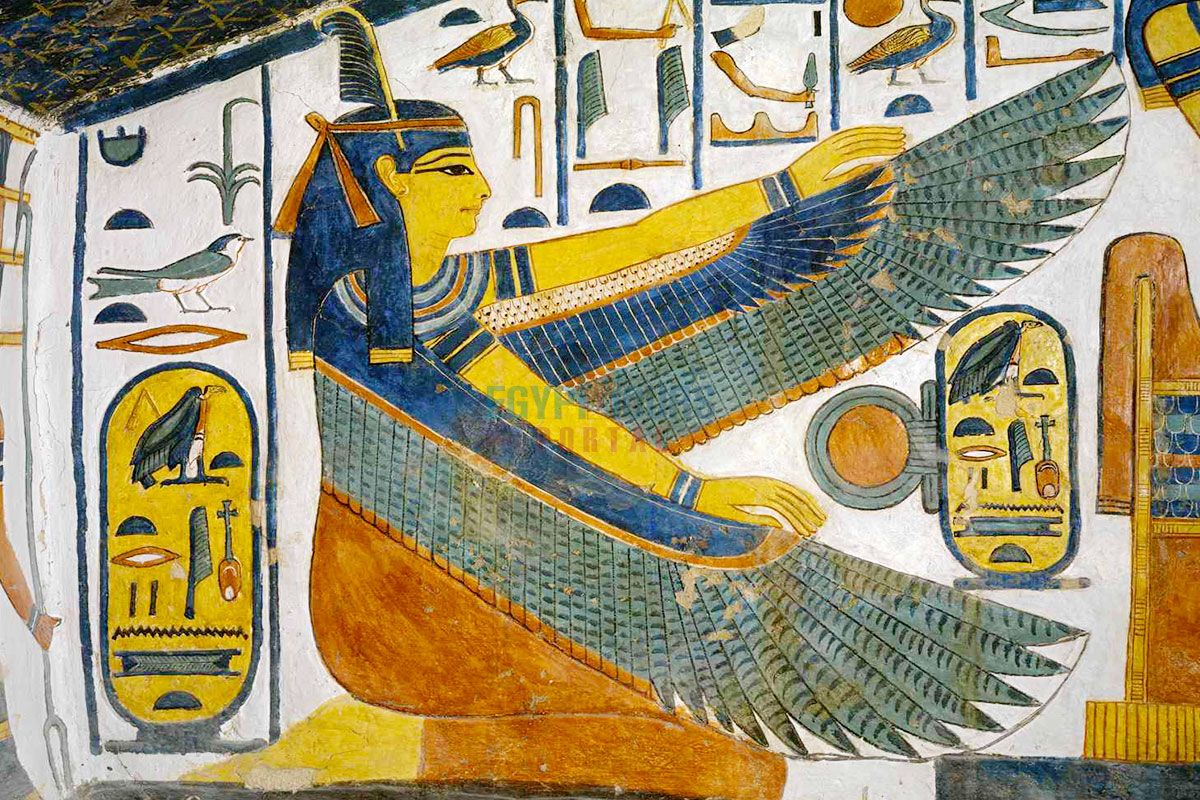
Ma’at, the principle of cosmic order, truth, and justice, was the foundation of Egyptian governance. Pharaohs were seen as the embodiment of ma’at, tasked with ensuring harmony between the divine and earthly realms. This philosophy influenced lawmaking, taxation, and foreign policy, creating a moral framework that sustained Egypt for millennia.
The presentation of ma’at during rituals symbolized the Pharaoh’s commitment to this principle. Administrative practices, such as the equitable distribution of resources and the resolution of legal disputes, were rooted in the pursuit of ma’at. This concept not only stabilized internal governance but also shaped Egypt’s interactions with neighboring states, reinforcing its reputation as a beacon of order and prosperity.

The decline of ancient Egyptian politics resulted from a combination of internal and external factors that disrupted its centralized governance. Periods of fragmentation, such as the First (c. 2181–2040 BCE) and Second (c. 1782–1570 BCE) Intermediate Periods, were marked by weak central authority, with regional nomarchs gaining autonomy and often clashing for control.
Economic challenges further exacerbated political instability. During the Late Period (c. 664–332 BCE), heavy taxation, declining agricultural productivity, and corruption weakened the state’s ability to maintain its infrastructure and fund military campaigns. Additionally, the growing power of the priesthood, particularly the High Priests of Amun, rivaled the authority of Pharaohs, as seen during the Third Intermediate Period (c. 1070–664 BCE).
Foreign invasions were a major factor in Egypt’s decline. The Hyksos introduced new military technology during their occupation in the Second Intermediate Period, while later invasions by the Assyrians (671 BCE), Persians (525 BCE), and eventually Alexander the Great (331 BCE) eroded Egyptian sovereignty. Cleopatra VII’s defeat in 30 BCE marked the end of Pharaonic rule and Egypt’s transition into a Roman province.
Political instability was also fueled by weak succession planning and internal power struggles, as seen during the New Kingdom’s Ramesside Period. Despite efforts to restore order, Egypt’s political structure ultimately could not withstand the pressures of external conquest and internal division.
Ancient Egypt’s political systems were highly organized, allowing the civilization to thrive for over three thousand years. The integration of divine kingship with a sophisticated bureaucracy enabled effective governance across vast territories. The Pharaoh’s dual role as a political leader and divine figure provided stability, while the intricate administration ensured the implementation of policies.
The legacy of Egypt’s political philosophy, including the concept of ma'at, and its diplomatic strategies continue to influence modern political systems. The combination of centralized power, regional governance, and religious integration laid the groundwork for future empires and governmental structures. The political system led to the creation of many great constructions and artifacts which can be explored through all our magical Egypt Tour Packages from India and Nile River Cruise from Egypt that can shed light on the greatness of this eternal civilization.
Private 4 Days Cairo Tour Packages for Indian Travelers 4 days Cairo Egypt Tour pack...
Tour Location: Cairo – Giza...
5 Days Cairo and Alexandria Tour Package For Indian Travelers 5 days Cairo and Alexa...
Tour Location: Cairo/Giza/Alexandria...
6 Days Cairo, Luxor & Aswan Tour Package For Indian Travelers 6 days Cairo, Luxo...
Tour Location: Cairo/Giza/Aswan/Luxor...
Amazing 7 Days Cairo and Hurghada Holiday for Indian Travelers 7 Days Cairo & Hu...
Tour Location: Cairo – Giza – Hurgh...
The Pharaoh was considered a divine ruler, acting as the political, religious, and military leader of Ancient Egypt.
Religion played a central role, with Pharaohs regarded as gods on Earth, ensuring harmony between the people and the deities.
Ancient Egypt's political system was a centralized monarchy with a hierarchical bureaucracy including viziers, governors, and scribes.
A combination of centralized power, religious authority, and a structured bureaucracy helped maintain stability.
Yes, the legal system was based on the principles of Ma'at (truth, balance, and order), with laws enforced by officials and judged by the Pharaoh or their delegates.
Military campaigns were crucial for securing borders, expanding territory, and projecting the Pharaoh's power and divine authority.
While political power was concentrated among the elite, commoners were often conscripted for public works and military service, indirectly supporting governance.
Yes, some women, like Hatshepsut and Cleopatra, held significant political power as Pharaohs or influential consorts.
Factors like internal strife, weak leadership, economic challenges, and foreign invasions contributed to the decline of Ancient Egyptian political power.
The entire country of Egypt deserve to be explored with its every heavenly detail but there are places that must be seen before any other such as the breathtaking Hurghada's red sea, The wonders of Cairo the pyramids of Giza, the great sphinx, the Egyptian Museum, Khan El Khalili Bazaar, the wonders of Luxor like Valley of the Kings, Karnak & Hatshepsut temple and the wonders of Aswan such as Abu Simbel temples, Philea temple, Unfinished obelisk and The Wonders of Alexandria like Qaitbat Citadel, Pompey's Pillar and Alexandria Library. Read more about the best places to visit in Egypt.
If you want to apply for a Visa On Arrival that lasts for 30 days then you should be one of the eligible countries, have a valid passport with at least 6 months remaining and pay 25$ USD in cash, as for the E-Visa for 30 day you should have a valid passport for at least 8 months, complete the online application, pay the e-visa fee then print the e-visa to later be presented to the airport border guard. You could also be one of the lucky ones who can obtain a free visa for 90 days. Read more about Egypt travel visa.
Egypt has a variety of delicious cuisines but we recommend “Ful & Ta’meya (Fava Beans and Falafel)”, Mulukhiya, “Koshary”, a traditional Egyptian pasta dish, and Kebab & Kofta, the Egyptian traditional meat dish.
The best time to travel to Egypt is during the winter from September to April as the climate becomes a little tropical accompanied by a magical atmosphere of warm weather with a winter breeze. You will be notified in the week of your trip if the Climate is unsafe and if any changes have been made.
You should pack everything you could ever need in a small bag so you could move easily between your destinations.
We have been creating the finest vacations for more than 20 years around the most majestic destinations in Egypt. Our staff consists of the best operators, guides and drivers who dedicate all of their time & effort to make you have the perfect vacation. All of our tours are customized by Travel, Financial & Time consultants to fit your every possible need during your vacation. It doesn't go without saying that your safety and comfort are our main priority and all of our resources will be directed to provide the finest atmosphere until you return home.
You will feel safe in Egypt as the current atmosphere of the country is quite peaceful after the government took powerful measures like restructuring the entire tourist police to include all the important and tourist attractions in Egypt. Read more about is it safe to travel to Egypt.
Wear whatever feels right and comfortable. It is advised to wear something light and comfortable footwear like a closed-toe shoe to sustain the terrain of Egypt. Put on sun block during your time in Egypt in the summer to protect yourself from the sun.
The best activity is by far boarding a Nile Cruise between Luxor and Aswan or Vise Versa. Witness the beauty of Egypt from a hot balloon or a plane and try all the delicious Egyptian cuisines and drinks plus shopping in old Cairo. Explore the allure and wonders of the red sea in the magical city resorts of Egypt like Hurghada and many more by diving and snorkeling in the marine life or Hurghada. Behold the mesmerizing western desert by a safari trip under the heavenly Egyptian skies.
There are a lot of public holidays in Egypt too many to count either religious or nation, the most important festivals are the holy month of Ramadan which ends with Eid Al Fitr, Christmas and new years eve. Read more about festivals & publich holidays in Egypt.
Egypt is considered to be one of the most liberal Islamic countries but it has become a little bit conservative in the last couple of decades so it is advised to avoid showing your chest, shoulders or legs below the knees.
Arabic is the official language and Most Egyptians, who live in the cities, speak or understand English or at least some English words or phrases. Fewer Egyptians can speak French, Italian, Spanish, and German. Professional tour guides, who work in the tourism sector, are equipped to handle visitors who cannot speak Arabic and they will speak enough English and other languages to fulfill the needs of all our clients.
The fastest way is a car, of course, a taxi. If you are in Cairo ride a white taxi to move faster or you could board the fastest way of transportation in Egypt metro if the roads are in rush hour.
The temperature in Egypt ranges from 37c to 14 c. Summer in Egypt is somehow hot but sometimes it becomes cold at night and winter is cool and mild. The average of low temperatures vary from 9.5 °C in the wintertime to 23 °C in the summertime and the average high temperatures vary from 17 °C in the wintertime to 32 °C in the summertime. The temperature is moderate all along the coasts.
It is the home of everything a traveler might be looking for from amazing historical sites dating to more than 4000 years to enchanting city resorts & beaches. You will live the vacation you deserve as Egypt has everything you could possibly imagine.









